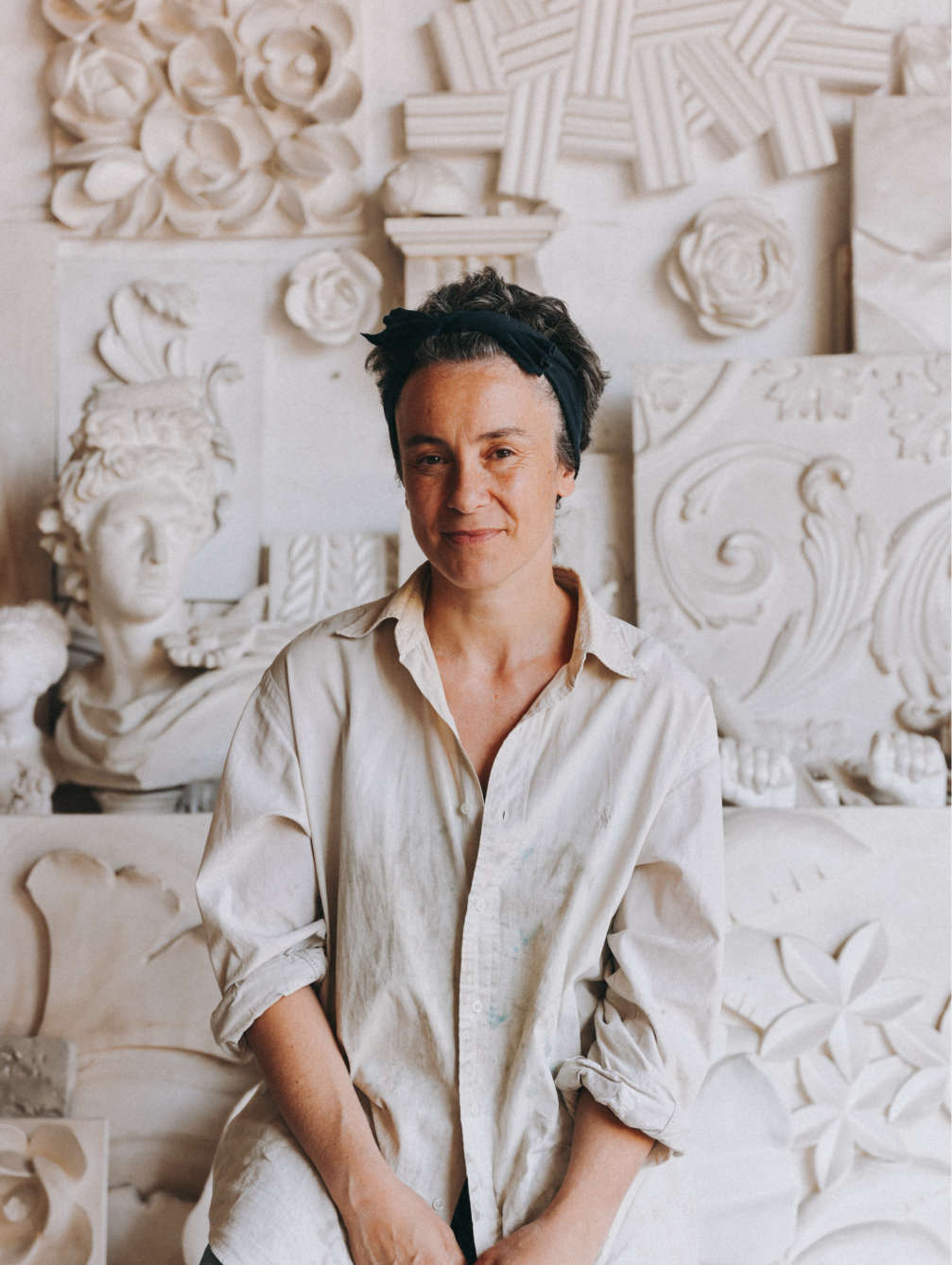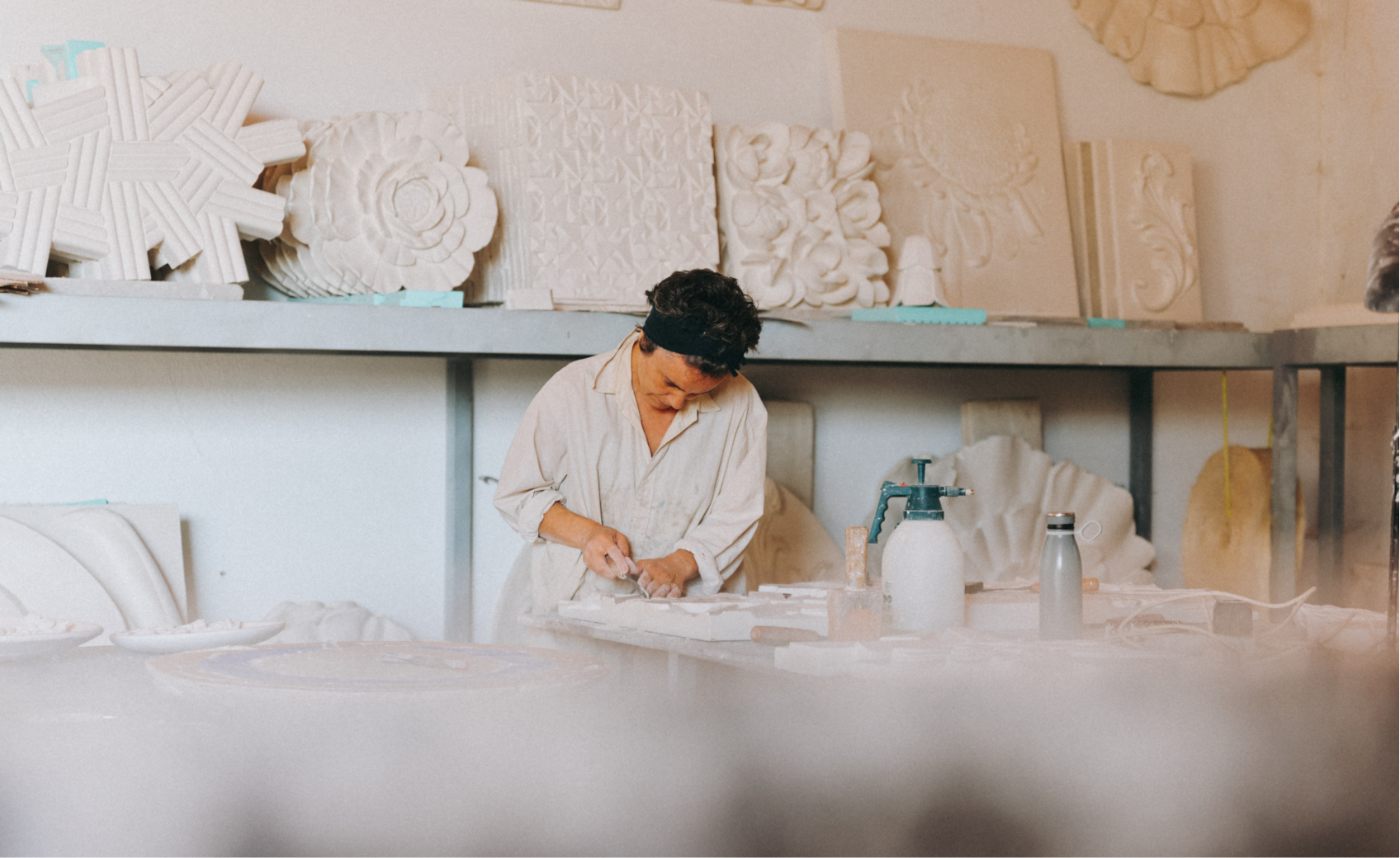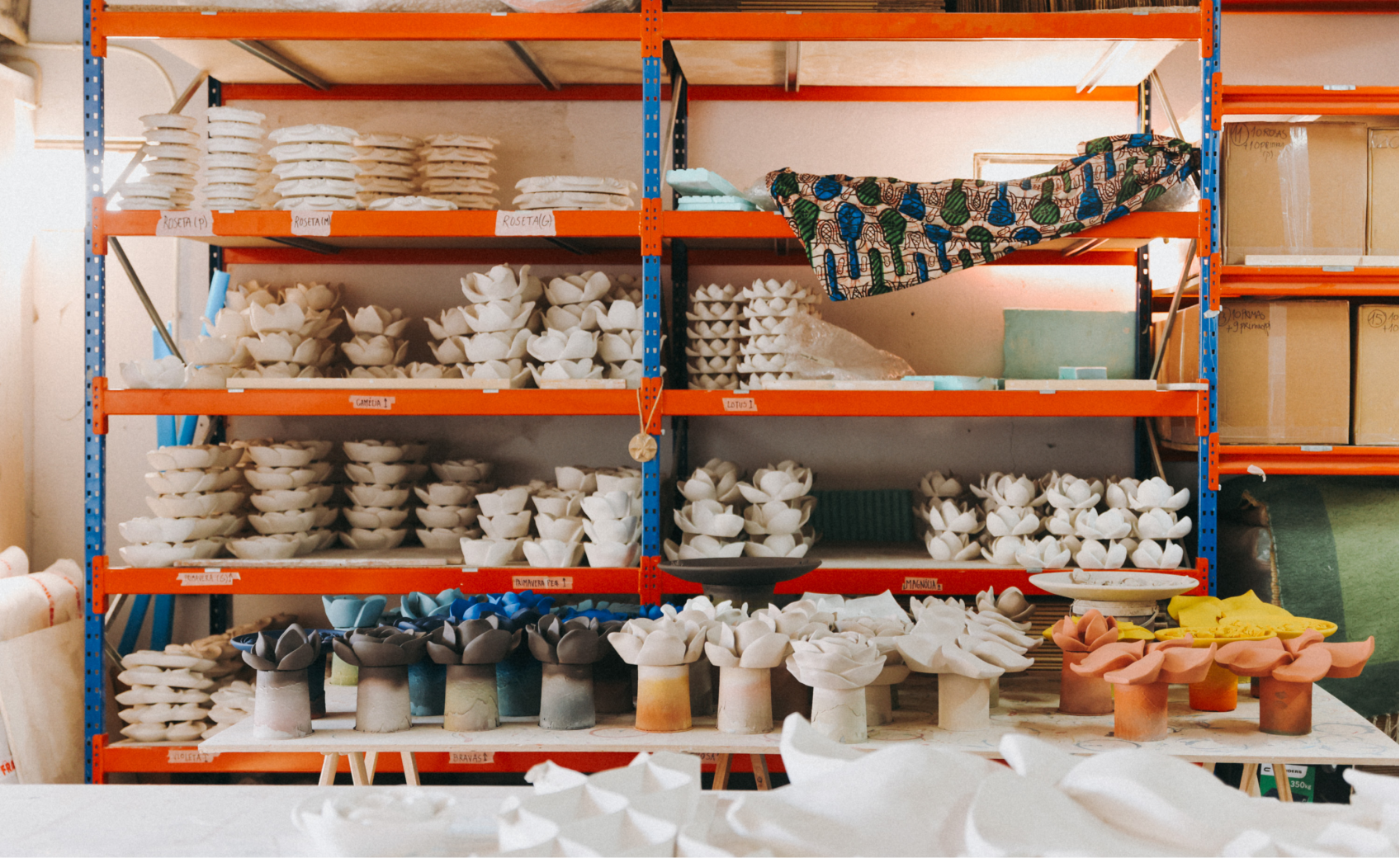Briefly, please introduce yourself to those who don’t know your work well yet.
I’m Iva Viana, I studied Fine Arts in Porto, Sculpture, and when I finished, I worked for a French company as a sculpture technician. In other words, I executed the drawings and plans they gave me to the letter. However, six years later, I felt the need to open my studio and play a more creative role in my work. Those six years at the company were crucial because it was my first contact with plaster.
What are your biggest inspirations?
What really inspires me is the material itself; plaster is really interesting. And it’s considered a poor material. But then it’s everything. I love this space, so I don’t want to leave; I’ve invested a lot in improving it and really like this light. I love photographing because I see plans and go ‘wow’, this is really beautiful. In all my work, being volume and sculpture, I only see the light and shadows, light and shadows, and then the same piece in the morning is one thing, and in the afternoon, it’s another because the light has already changed completely. And that enchants me. That’s what inspires me, really.


Can you describe your creative process?
For me, it’s essential that the drawing is my own, but I’m significantly influenced by the story I hear. I often joke that I tell stories, but the truth is that then I lose the thread, and I’m already telling my interpretation of the story I’ve heard. It always starts there with the story or the space that will receive the piece. Now, it’s essential that I play a creative role in the whole piece, designed and created by me.
What role does colour play in your work?
Here, it’s essential that the pieces are always monochrome because whether they’re white or not, we’re always working with light and shade in the piece. So, I can’t accept having three or four colours in the same piece, which is unthinkable. The introduction of colour in the studio came about for the more commercial pieces. I’ve been introducing more and more colours, and the palette now, I think, exceeds 20 colours. And it’s interesting because people choose the piece they want in the colour they want. So here, it’s become almost a collectable object of desire. When a person has that flower in that colour, they already wish to have another flower in the other colour. And it’s also very nice to realise that the piece is no longer mine but theirs. It’s also wonderful when they feel that they can choose the colour they want; the piece stops being mine, totally mine, and becomes theirs.
If you had to choose three colours to describe your work, what would they be?
For me, white is essential. For now, it’s because of the material’s colour, and it’s the colour I work with. And I need to understand the light and shade of my work. If it weren’t for white, I’d love to see my pieces in black; they’re beautiful and look very elegant or dark blue.

If you had to choose three colours to describe your work, what would they be?
For me, white is essential. For now, it’s because of the material’s colour, and it’s the colour I work with. And I need to understand the light and shade of my work. If it weren’t for white, I’d love to see my pieces in black; they’re beautiful and look very elegant or dark blue.
You often use CIN colours in your work. How did this relationship start?
I’ve always worked with CIN. Even at the beginning of the studio, I always made a point of investing in suitable materials, not least because the final piece had to be as good as possible for the client. But also, in the beginning, I worked with very few colours. I like my staff and partners around me, and I prefer to buy locally. We don’t have an exclusive CIN shop here in Viana do Castelo, but I have partners who sell CIN, with whom I’ve always worked.









